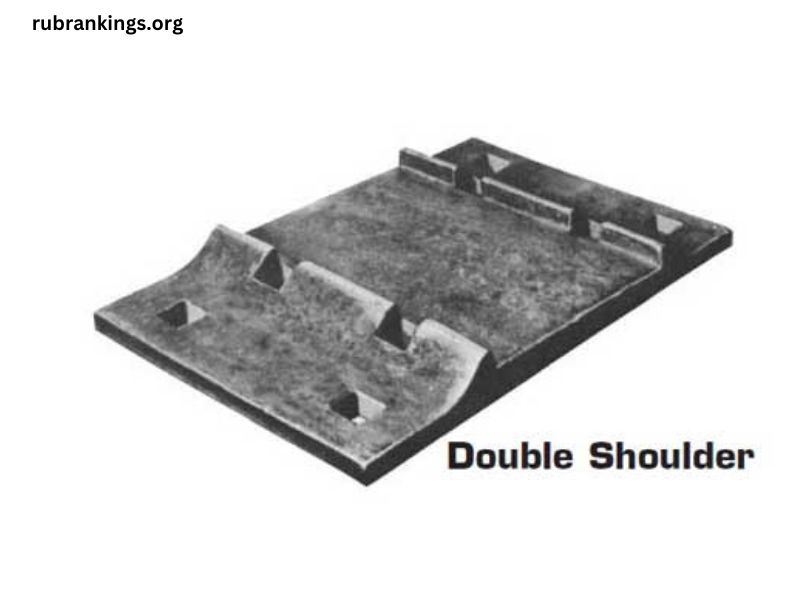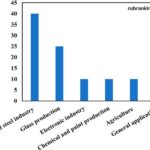In the realm of railroad infrastructure, tie-plate rail tie barriers play a crucial role in ensuring the safety and stability of train operations. These barriers, composed of sturdy wooden ties and metal tie plates, form a vital component of the track structure, providing a solid foundation for the rails to rest upon. However, like any other structural element, tie-plate rail tie barriers are susceptible to decay over time, posing potential risks to rail operations if left unaddressed.
As you embark on this comprehensive guide, you will gain a deep understanding of tie-plate rail tie barrier decay, its causes, signs, and the profound impact it can have on safety. Moreover, you will discover effective preventive measures, maintenance strategies, and replacement options to mitigate the effects of decay and ensure the longevity and reliability of these essential barriers.
Understanding tie-plate rail tie barrier decay
Tie-plate rail tie barrier decay is a gradual process that occurs due to various factors, including environmental conditions, exposure to moisture, and the natural aging of materials. This deterioration can manifest in different forms, such as rotting, cracking, or loosening of the ties and tie plates, compromising the structural integrity of the barrier.
The consequences of tie-plate rail tie barrier decay can be severe, potentially leading to derailments, track misalignments, and other safety hazards. Therefore, it is imperative to recognize the signs of decay and take proactive measures to address the issue before it escalates into a critical situation.
Common causes of tie-plate rail tie barrier decay
To effectively combat tie-plate rail tie barrier decay, it is essential to understand the underlying causes that contribute to its occurrence. Here are some of the most common factors:
- Moisture exposure: Prolonged exposure to moisture, whether from rain, snow, or groundwater, can accelerate the decay process of wooden ties. Moisture facilitates the growth of fungi and bacteria, leading to rot and deterioration.
- Ultraviolet (UV) radiation: Constant exposure to sunlight and UV radiation can cause the wood fibers in the ties to break down, resulting in surface cracking and weakening of the material.
- Insect and fungal infestations: Certain insects, such as termites and wood-boring beetles, as well as fungi like dry rot, can rapidly degrade the structural integrity of wooden ties, compromising their load-bearing capacity.
- Mechanical wear and tear: The constant vibrations and stress from passing trains can cause the ties and tie plates to loosen over time, leading to potential misalignments and accelerated decay.
- Improper installation or maintenance: Inadequate installation practices or lack of regular maintenance can contribute to the premature decay of tie-plate rail tie barriers, exacerbating existing issues.
Signs of tie-plate rail tie barrier decay
Early detection of tie-plate rail tie barrier decay is crucial for implementing timely preventive measures and minimizing potential risks. Here are some common signs to watch out for:
- Visual inspection: Look for signs of rot, cracks, splits, or discoloration in the wooden ties, as well as any signs of loosening or displacement of the tie plates.
- Audible indicators: Listen for unusual sounds, such as creaking or grinding noises, which may indicate loosening or shifting of the ties or tie plates during train passage.
- Track geometry issues: Observe any irregularities in the track alignment, such as dips, humps, or lateral shifts, which could be indicative of underlying tie-plate rail tie barrier decay.
- Vegetation growth: Excessive vegetation growth around the ties or between the tie plates can be a sign of moisture accumulation, potentially leading to accelerated decay.
The impact of tie-plate rail tie barrier decay on safety
Tie-plate rail tie barrier decay poses significant safety risks that should not be overlooked. When these barriers deteriorate, the following potential consequences can arise:
- Derailment hazards: Decayed or loosened ties and tie plates can lead to track misalignments, increasing the risk of derailments, which can result in catastrophic accidents and loss of life.
- Track instability: Compromised tie-plate rail tie barriers can cause the rails to shift or become unstable, leading to potential speed restrictions or temporary track closures until repairs are made.
- Increased maintenance costs: Addressing tie-plate rail tie barrier decay often requires significant resources, including labor, materials, and potential track downtime, resulting in higher maintenance costs for railroad operators.
- Environmental impact: Decayed wooden ties may need to be replaced, contributing to deforestation and environmental concerns if not properly managed and recycled.
By understanding the gravity of these potential impacts, you can appreciate the importance of proactive maintenance and timely intervention to mitigate the risks associated with tie-plate rail tie barrier decay.
Preventive measures for tie-plate rail tie barrier decay
Implementing effective preventive measures is crucial to minimizing the risk of tie-plate rail tie barrier decay and ensuring the longevity of your railroad infrastructure. Here are some recommended strategies:
- Proper material selection: Choose high-quality, treated wooden ties or consider alternative materials, such as composite ties or concrete ties, which may offer better resistance to decay and environmental factors.
- Drainage and moisture control: Ensure proper drainage systems are in place to prevent water accumulation around the ties, and consider implementing measures to reduce moisture exposure, such as using ballast mats or geotextile fabrics.
- Protective coatings: Apply protective coatings or sealants to the wooden ties, which can help prevent moisture penetration and extend their lifespan.
- Vegetation management: Implement regular vegetation control measures to prevent the growth of plants and weeds around the ties, which can contribute to moisture retention and insect infestations.
- Regular inspections: Conduct periodic visual inspections and non-destructive testing to identify early signs of decay, allowing for timely intervention and repairs.
By implementing these preventive measures, you can significantly reduce the risk of tie-plate rail tie barrier decay and enhance the overall safety and reliability of your railroad operations.
Regular inspections and maintenance for tie-plate rail tie barriers
Regular inspections and maintenance are crucial components of an effective tie-plate rail tie barrier management strategy. Here are some best practices to consider:
- Inspection frequency: Establish a regular inspection schedule based on factors such as traffic volume, environmental conditions, and the age of the tie-plate rail tie barriers. Inspections should be conducted at least annually, but more frequent inspections may be necessary in high-risk areas or areas with known decay issues.
- Inspection methods: Utilize a combination of visual inspections, non-destructive testing techniques (e.g., ground-penetrating radar, ultrasonic testing), and manual probing to assess the condition of the ties and tie plates accurately.
- Documentation and record-keeping: Maintain detailed records of inspection findings, including the location, extent, and severity of any decay or defects observed. This information will aid in prioritizing maintenance activities and tracking the progression of decay over time.
- Maintenance activities: Based on inspection results, implement timely maintenance activities, such as replacing decayed ties or tie plates, tightening loose components, and addressing any drainage or vegetation issues that may contribute to decay.
- Collaboration and communication: Foster collaboration and communication between maintenance crews, engineers, and other stakeholders to ensure a coordinated approach to tie-plate rail tie barrier maintenance and to share best practices and lessons learned.
By adhering to a comprehensive inspection and maintenance program, you can proactively address tie-plate rail tie barrier decay, extend the lifespan of your infrastructure, and enhance the overall safety and reliability of your railroad operations.
Repairing tie-plate rail tie barrier decay
When tie-plate rail tie barrier decay is identified during inspections, prompt action is required to mitigate potential risks and prevent further deterioration. Here are some common repair methods to consider:
- Tie replacement: If the decay is localized and limited to individual ties, replacing the affected ties with new or reconditioned ties may be the most practical solution. This process involves carefully removing the old ties, preparing the track bed, and installing the new ties with proper tie plate and rail fastening.
- Tie plate replacement: In cases where the tie plates are severely corroded or damaged, replacing them with new tie plates can help restore the structural integrity of the tie-plate rail tie barrier. This may involve temporarily lifting the rails to facilitate the replacement process.
- Partial tie replacement: For ties with localized decay or damage, partial tie replacement may be an option. This involves cutting out the affected section of the tie and splicing in a new section, effectively extending the lifespan of the tie without requiring a full replacement.
- Epoxy or polymer repair: In some cases, epoxy or polymer repair materials can be used to fill cracks, holes, or voids in the ties, providing a temporary or semi-permanent solution until full replacement is necessary.
- Drainage and vegetation control: Addressing underlying issues, such as poor drainage or excessive vegetation growth, is essential to prevent further decay and ensure the longevity of the repairs.
When undertaking repair work, it is crucial to follow proper safety protocols, such as implementing track protection measures and adhering to relevant regulations and guidelines. Additionally, consider the long-term implications of the repair methods and plan for future maintenance or replacement as needed.
Replacement options for severely decayed tie-plate rail tie barriers
In situations where tie-plate rail tie barrier decay is widespread or severe, complete replacement may be the most appropriate solution. Here are some replacement options to consider:
- Traditional wooden ties: Replacing decayed wooden ties with new, treated wooden ties is a common approach. However, it is essential to consider the longevity and potential environmental impact of this option.
- Composite ties: Composite ties, made from a combination of recycled plastic and other materials, offer improved resistance to decay, insect infestations, and moisture absorption. While more expensive initially, they can provide a longer lifespan and lower maintenance costs in the long run.
- Concrete ties: Concrete ties are highly durable, resistant to decay, and have a longer lifespan compared to traditional wooden ties. However, they are more expensive and may require specialized equipment for installation and maintenance.
- Alternative materials: Researchers are continuously exploring new materials and technologies for tie-plate rail tie barriers, such as recycled rubber ties or fiber-reinforced polymer (FRP) ties. While still in development, these alternatives may offer improved performance and sustainability in the future.
When selecting a replacement option, consider factors such as initial cost, long-term maintenance requirements, environmental impact, and compatibility with your existing infrastructure. Additionally, consult with experts and industry guidelines to ensure compliance with relevant standards and regulations.
Conclusion
Tie-plate rail tie barriers are critical components of railroad infrastructure, playing a vital role in ensuring the safety and reliability of train operations. However, these barriers are susceptible to decay over time, posing potential risks if left unaddressed.
By understanding the causes, signs, and impacts of tie-plate rail tie barrier decay, you can take proactive measures to prevent and mitigate its effects. Implementing preventive strategies, such as proper material selection, moisture control, and regular inspections, can significantly extend the lifespan of your tie-plate rail tie barriers and minimize the need for costly repairs or replacements.
When decay does occur, prompt action is essential. Repair methods, such as tie replacement, tie plate replacement, or epoxy repairs, can address localized issues, while severe or widespread decay may necessitate complete replacement with more durable materials like composite or concrete ties.



